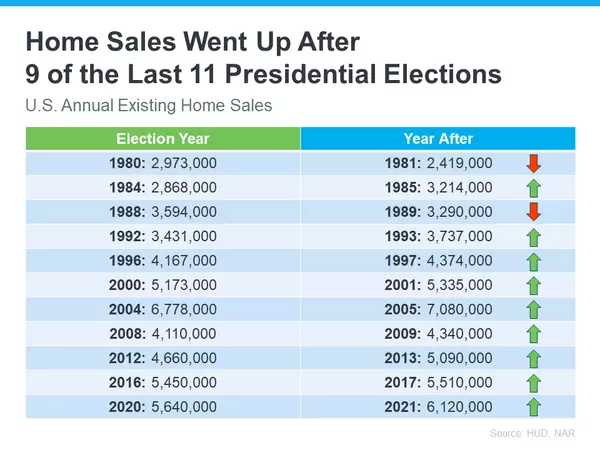Weekly Mortgage Update | From The Brothers M | Cornerstone Home Lending | 02/06

Week of January 30, 2023 in Review The Fed hiked its benchmark Fed Funds Rate, while there’s more to January’s job data than the headlines suggest. Plus, find out what the latest news on home price appreciation really means, all ahead in these stories: Are More Fed Rate Hikes Ahead This Year? January Job Growth Not as Strong as It Appears Private Payrolls Disappoint in January Jobless Claims Reflect Tight Labor Market Talk of Housing Crash Not Supported by Appreciation Data Are More Fed Rate Hikes Ahead This Year? As expected, the Fed hiked its benchmark Fed Funds Rate by 25 basis points at its meeting last Wednesday. The Fed has now hiked the Fed Funds Rate eight times since last March, bringing it to a range of 4.5% to 4.75%. The Fed Funds Rate is the interest rate for overnight borrowing for banks and it is not the same as mortgage rates. When the Fed hikes the Fed Funds Rate, they are trying to slow the economy and curb inflation. What’s the bottom line? In the press conference following the meeting, Fed Chair Jerome Powell acknowledged that inflation has been declining, which he noted was encouraging. However, he said the Fed has more work to do to ensure inflation is on a sustained downward path. Powell signaled that “a couple” more hikes to the Fed Funds Rate would be appropriate, with the next decision coming at their meeting on March 21-22. He emphasized that the Fed would continue to make their “decisions meeting by meeting, taking into account the totality of incoming data and their implications for the outlook for economic activity and inflation.” January Job Growth Not as Strong as It Appears The Bureau of Labor Statistics (BLS) reported that there were 517,000 jobs created in January, which was much stronger than estimates. Revisions to the data from November and December added 71,000 jobs in those months combined. The unemployment rate declined from 3.5% to 3.4%, which is the lowest since 1969. What’s the bottom line? There are two reports within the Jobs Report and there is a fundamental difference between them. The Business Survey is where the headline job number comes from and it's based predominately on modeling and estimations. The Household Survey, where the Unemployment Rate comes from, is derived by calling households to see if they are employed. The Household Survey has its own job creation component and it showed that there were 894,000 new jobs created last month. While these job growth figures appear strong, it’s important to note that there were big adjustments to how the data was calculated in January. New seasonal factors, new benchmarks and new population estimates/controls were instated. If we remove these adjustments, the number of job creations in the Household Survey would have only been 84,000 versus the 894,000 that were reported. In addition, looking deeper at the face value numbers, of the 894,000 job creations in the Household Survey, 606,000 were from part-time workers. Considering the number of large layoffs that have been reported across the country, along with the revisions, new benchmarks and population adjustments made to the reporting by the BLS, the labor sector likely isn’t as strong as their January Jobs Report suggests. Private Payrolls Disappoint in January Private payrolls came in much lower than expected last month, as the ADP Employment Report showed that there were just 106,000 jobs created in January. The construction sector accounted for 24,000 jobs lost, which is understandable given the slowdown we have seen among homebuilders. Small businesses with under 50 employees were hit hardest, as they lost 75,000 jobs, while large firms with 500 or more employees posted 128,000 job gains. ADP also reported that annual pay for job stayers increased 7.3% year over year, which was unchanged from the previous report. Job changers saw an average increase of 15.4%, up from 15.2%. What’s the bottom line? Nela Richardson, chief economist for ADP, said, “In January, we saw the impact of weather-related disruptions on employment during our reference week.” ADP uses the week that includes the 12th to collect payroll sampling data each month. They blamed the extreme weather during that timeframe in January, including snow in the Midwest and flooding in California, for the weaker than expected report. However, it was mild in other parts of the country and there are supposed to be seasonal adjustments reflected in the data, suggesting that weather was not the only contributing factor to the report. Jobless Claims Reflect Tight Labor Market The number of people filing for unemployment benefits for the first time declined for the third straight week, as Initial Jobless Claims dropped by 3,000 to 183,000. Continuing Claims, which measure people who continue to receive benefits after their initial claim is filed, fell 11,000 to 1.655 million. What’s the bottom line? We are continuing to see a tight labor market where companies are doing their best to hold on to workers. However, Continuing Claims have risen by nearly 300,000 over the last four months, which also suggests it’s becoming harder for many to find a job if they are let go. Talk of Housing Crash Not Supported by Appreciation Data The Case-Shiller Home Price Index, which is considered the “gold standard” for appreciation, showed home prices fell 0.6% from October to November but they were 7.7% higher when compared to November of 2021. This annual reading is a decline from the 9.2% gain reported in October. The Federal Housing Finance Agency (FHFA) also released their House Price Index, which revealed that home prices fell 0.1% from October to November. While prices rose 8.2% from November 2021 to November 2022, this was a decline from the 9.8% annual increase reported in October. FHFA’s report measures home price appreciation on single-family homes with conforming loan amounts, which means it most likely represents lower-priced homes. It also differs from Case-Shiller’s data, in that it does not include cash buyers or jumbo loans. What’s the bottom line? Home prices have been softening nationwide, but S&P DJI Managing Director Craig J. Lazzara noted that they are only down 3.6% from their peak last June. This is a far cry from a housing crash of 20% that some in the media are predicting. In addition, home prices in Case-Shiller’s 10-City and 20-City Indexes are down 5% from their peak, showing that prices in these major cities are declining a bit more than they are in the nation overall. Prices in some of these locations were a bit overheated and are now giving back some gains. When removing those cities, prices around the rest of the country are flatter from the peak overall. Family Hack of the Week Looking for a winning Super Bowl snack? This Potato Skins recipe from the New York Times is worth cheering for. Preheat oven to 400 degrees Fahrenheit. Rub 4 baking potatoes lightly with olive oil and bake on a foil-lined baking sheet until skins are crisp and a fork can be easily inserted, approximately 1 hour. Transfer potatoes to a wire rack and cool for 10 minutes. Assemble the toppings while the potatoes are cooking. Grate cheddar cheese into a small bowl until you have around 2 cups. Cook 8 ounces thick-cut bacon in a large skillet over medium heat until crisp and transfer to a plate. Chop into 1-inch pieces once cool. Thinly slice 1 bunch scallions. Cut each potato into quarters lengthwise to create four wedges. Scoop out the cooked potato, leaving around 1/4 inch inside. You can save the cooked potato for mashed potatoes or soup. Set the oven to broil and return the potato wedges to the baking sheet. Sprinkle the cheese and bacon evenly on top. Place under the broiler until the cheese starts bubbling. Remove from oven and add potato skins to a serving platter. Spoon a teaspoon of sour cream on each, top with scallions and serve with the hot sauce of your choice. What to Look for This Week This week’s economic calendar is quiet when compared to last week’s plentiful headlines. Jobless Claims remain important to monitor when they are released as usual on Thursday. Investors will also be closely watching Wednesday’s 10-year Note and Thursday’s 30-year Bond auctions for the level of demand. Technical Picture Mortgage Bonds ended last week battling with a dual floor of support at their 25-day and 50-day Moving Averages. The 10-year shot up to 3.53% on Friday, which is right its 25-day and 50-day Moving Averages, but was rejected lower. If you have any questions in regards to rates or scenarios please reach out to us at 310-998-7911. If you're looking to get preapproved, CLICK HERE Read our 5 star Reviews (Over 240)
Read MoreWeekly Mortgage Update | The Brothers M | Cornerstone Home Lending | 1/9/2023

Week of January 9, 2023 in Review Consumer inflation continued to cool in December, but there were also more signs of an economic slowdown. Here are last week’s key headlines: Consumer Inflation Continues to Ease Inflation Remains Top Problem for Many Small Businesses Seasonal Factors Likely Impacted Latest Jobless Claims Services Sector Shows Signs of Slowdown Watching an Important Recession Indicator Consumer Inflation Continues to Ease The Consumer Price Index (CPI), which measures inflation on the consumer level, showed that inflation decreased by 0.1% in December. On an annual basis, inflation declined from 7.1% to 6.5%. Core CPI, which strips out volatile food and energy prices, rose 0.3%. As a result, year-over-year Core CPI decreased from 6% to 5.7%. All of these figures were in line with estimates. Of particular note, shelter costs make up 39% of Core CPI and they rose 0.8% in December, meaning they played a big role in the 0.3% monthly gain in Core CPI. However, shelter costs have been lagging in the CPI report, as they have been coming down in more real-time data. Once these moderating shelter costs are reflected in the CPI data, they should add additional downside pressure to inflation. What’s the bottom line? Inflation is the arch enemy of fixed investments like Mortgage Bonds because it erodes the buying power of a Bond's fixed rate of return. If inflation is rising, investors demand a rate of return to combat the faster pace of erosion due to inflation, causing interest rates to rise as they did throughout much of last year. Since lower inflation typically helps both Mortgage Bonds and mortgage rates improve, these signs of easing inflation are welcome. In fact, if you took the last three monthly CPI readings and averaged them over the next 12 months, the run rate would be 1.6%. Doing the same for Core CPI would give us a run rate of 3.2%. If the lower monthly readings we’ve seen recently continue, they will help us make substantial progress towards the Fed’s 2% inflation target. Inflation Remains Top Problem for Many Small Businesses The National Federation of Independent Business (NFIB) Small Business Optimism Index was reported at 89.8 for December. This was the lowest reading since last June and a hair above the weakest since 2013. Among the key takeaways, 32% of small business owners reported that inflation remained their biggest problem, so evidence of cooling inflation is certainly a welcome sign. What’s the bottom line? Overall, small business owners are not feeling optimistic about the year ahead, per NFIB’s chief economist Bill Dunkelberg. He explained, “Owners are managing several economic uncertainties and persistent inflation and they continue to make business and operational changes to compensate.” Seasonal Factors Likely Impacted Latest Jobless Claims Initial Jobless Claims remained relatively flat in the latest week, as the number of people filing for unemployment benefits for the first time fell by 1,000 to 205,000. Continuing Claims, which measure people who continue to receive benefits after their initial claim is filed, declined 63,000 to 1.634 million. What’s the bottom line? Even though Continuing Claims fell in the latest week, they have now risen by 270,000 since the beginning of October. Plus, this Continuing Claims data was for the week ending December 31, so it’s possible that the number of claims filed may have been higher if it wasn’t for the holidays. In addition, the Jobs Report for December showed that there was a big spike in both part-time and second jobs, which also could have impacted the number of jobless claims that were filed. Services Sector Shows Signs of Slowdown The ISM Services Index, which measures economic activity in the services sector, has now joined its manufacturing brethren in moving below 50 into contraction territory. The index fell to 49.6% in December from 56.5% in November, marking the first reading below 50 since December 2009 (other than the start of the pandemic in the spring of 2020). Among the components of the index, new orders dropped sharply to 45.2%, employment fell into contraction at 49.8% and supplier deliveries eased again to 48.5%. What’s the bottom line? Survey respondents (which include purchasing and supply executives from non-manufacturing firms) spoke to the challenges they’re facing, with one noting that, “Orders from customers are softening, and some orders are being canceled.” Another explained, “Our company has tightened hiring of new employees month over month, due to uncertainty around the strength of the economy going into 2023.” All in all, the U.S. economy continues to weaken, and this is now spreading into the services sector. Watching an Important Recession Indicator The yield spread between the 10-year Treasury and 3-month Treasury has inverted almost 120 basis points. Normally, you would expect to receive a higher rate of return for putting your money away for 10 years versus 3 months. But when there is an economic slowdown and fear in the markets, the yield curve can go inverted – meaning that 3-month yields are higher than 10-year yields, which is backwards or upside down. What’s the bottom line? Looking back at the history of recessions, we always see an inversion occur ahead of a recession, although the actual recession may not follow immediately. While a recession is not a great thing for the economy, one positive aspect is that periods of recession are always coupled with lower interest rates. Family Hack of the Week Gift cards are a popular present over the holiday season and, unfortunately, that means a rise in gift card scams tends to follow in the new year. These important tips from the Federal Trade Commission (FTC) can help you and your loved ones stop scammers from stealing any funds. Just a few examples of the most common gift card scam scenarios include someone calling and pretending to be from a government agency, claiming you owe taxes or a fine. Another often reported example is a scammer claiming to be a friend or family member who is in trouble and needs money immediately. You may also have a scammer claim you won a prize, but you must pay fees in order to receive it. In each of these situations, scammers will suggest using gift cards to pay. Other strong signs that you may be talking to a scammer include pressure to act quickly, being asked for a gift card number and PIN, or being told to buy cards at several stores so cashiers aren’t suspicious. If you think you’ve been contacted by a gift card scammer, the FTC recommends reporting it at ReportFraud.ftc.gov. What to Look for This Week After the market closures Monday in honor of Martin Luther King Jr. Day, this week’s economic calendar includes crucial housing, manufacturing and inflation reports. On Wednesday, look for the National Association of Home Builders Housing Market Index, which will give us a near real-time read on builder confidence for this month. Housing Starts and Building Permits for December will be reported on Thursday, while December’s Existing Home Sales follows on Friday. January’s manufacturing data for the New York and Philadelphia regions will provide an important update on that sector when those reports are released on Tuesday and Thursday, respectively. Also of note, the Producer Price Index for December will give us the latest news on wholesale inflation when it is reported on Wednesday, while Retail Sales data for December will also be released. Plus, the latest Jobless Claims remain important to monitor when that data is released as usual on Thursday. Technical Picture Mortgage Bonds tested the very difficult ceiling of resistance at 101.671 but were rejected on Friday. The 10-year tested support at 3.43% but was also rejected and moved higher as a result. Quick explanation, to help you understand how to read the chart below. The higher the value of the mortgage bond = lower interest rates. If the chart continues to go down, the rate will go up. You can see things have been steadily going up, so interest rates are actually decreasing. If you have any questions in regards to rates or scenarios please reach out to us at 310-998-7911. If you're looking to get preapproved, CLICK HERE Read our 5 star Reviews (Over 240)
Read More
Categories
Recent Posts










